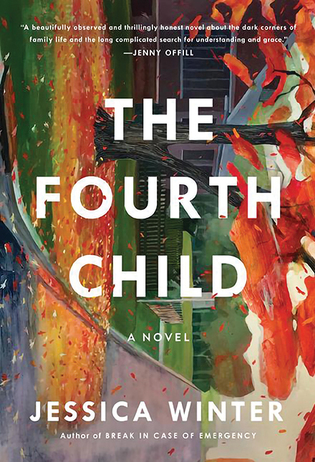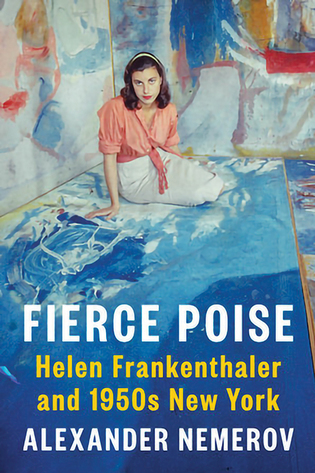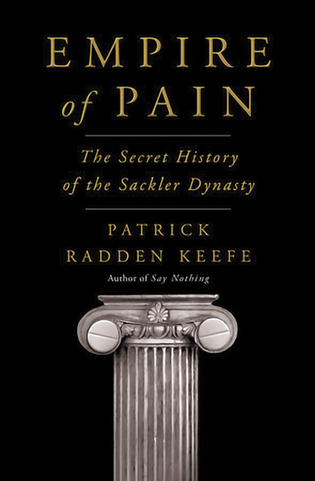
The Fourth Child
Jessica Winter ’99
HarperCollins, $26.99
Reviewed by Debra Spark ’84
A familiar story: a teenager gets accidentally pregnant, marries, and says “so long” to her previous life plans. In Jessica Winter’s second novel, The Fourth Child, the young mother is Jane, an ardent Catholic, mesmerized by saints and “suffering that was also salvation.” She marries the father, who is her serious boyfriend, but the two are unhappy from the start. Lauren, their daughter, “already wanted to be someone else” by the time she enters high school in the 1990s. As for Jane, though she has two more children and remains in the Buffalo of her youth, she considers her marriage “the ficus in the dining room that [she] was occasionally startled to discover was still alive.”
Initially, this domestic drama is at the heart of Winter’s narrative, the first third of which recalls William Trevor’s fiction. The pages are beautifully written yet relentlessly painful, focused on hopes dashed and lives spiraling downward. Then, a big plot move—the arrival of Mirela, an uncontrollable child whom Jane adopts from Romania. The little girl changes the terms of the narrative, shaking up the family and retrospectively revealing the novel’s true subject: the consequences of saving (or failing to save) a child.
From here, the novel’s canvas becomes increasingly broad. Jane steps up her anti-abortion activism, Mirela’s exhausting explosions attract community attention, and Lauren’s school days grow fraught as a guileful drama teacher leads her down a clearly treacherous path. Though Jane’s motives are always pure, in clear contrast to her often enraged husband’s, and though she absorbs advice from D. W. Winnicott and attachment theorists, Jane’s choices fail to heal her family.
In the end, all the novel’s characters, whether pro-choice or pro-life, must confront the catastrophic effects of the pro-life movement: the actions of violent extremists, the psyches of children abandoned in Romanian orphanages as a consequence of Nicolae Ceausescu’s anti-abortion policy, and the lives not lived due to an adulthood that arrives too soon.
Winter is an executive editor at the New Yorker. Her most recent articles have addressed parenting conundrums, the anti-abortion movement, predatory men, and the language of domestic violence, all interests that clearly inform this emotionally intense, complex book.
Debra Spark’s most recent books are And Then Something Happened: Essays on Fiction Writing and the novel Unknown Caller.

Fierce Poise: Helen Frankenthaler and 1950s New York
Alexander Nemerov ’92phd
Penguin Press, $35
Reviewed by Alexi Worth ’86
“Art is cunning,” the abstract painter Barnett Newman wrote in 1957 to his upstart colleague, Helen Frankenthaler, “but it is time you learned that cunning is not yet art.” Frankenthaler, then still in her twenties, had irritated Newman by arranging to get herself and Newman into a fluffy feature in Esquire magazine. The publicity—and the company—evidently didn’t suit the older artist, who threatened a lawsuit, and added some arch, insulting phrases. And yet, far from being rattled, Frankenthaler wrote to a friend that she found his attack “strangely flattering.”
That was Frankenthaler: shrewd, supremely confident, unintimidated by the male art world into which she had dropped, like a tall, beautiful Jewish Athena, after graduating from Bennington in 1949. Her composure more than bears out the title of Alexander Nemerov’s new book, Fierce Poise: Helen Frankenthaler and 1950s New York, which offers a vivid picture, not only of an important painter’s formative decade, but of the small rivalrous, social world of American painting’s liftoff years.
Nemerov, who taught at Yale for more than a decade before moving to Stanford, is known for his bravura rereadings of earlier American art history, from Raphaelle Peale to Frederic Remington, but here his voice is especially unacademic and personal. He refers to Frankenthaler as “Helen” throughout, arguing that he felt he had to “dare closeness.” His descriptions of individual paintings are precise, sympathetic, and often lyrical: “The shaken contours and splattered edges,” he writes of her Hotel Cro-Magnon, “bestow the right penumbra of suddenness on all things.”
In his introduction, Nemerov confesses that he hadn’t always been such an ardent Frankenthaler admirer. That same splatter could seem formless and self-indulgent, her “elitist and seemingly apolitical hauteur” off-putting. But Nemerov is hardly the only person to come around. For many younger painters and curators, Frankenthaler’s improvisational staining techniques now seem freshly relevant. Readers who enjoy Nemerov’s accessible, highly sympathetic account will also enjoy Katie Siegel’s The heroine Paint: After Frankenthaler (2015), and especially Mary Gabriel’s Ninth Street Women (2017) which offers an overlapping yet more comprehensive picture of Frankenthaler and her equally undaunted female peers.
Alexi Worth ’86 is a painter and writer living in Brooklyn, New York.

Empire of Pain: The Secret History of the Sackler Dynasty
Patrick Radden Keefe ’05JD
Doubleday, $32.50
Reviewed by Alex Beam ’75
This may be the best book about the opioid epidemic, because it is a book about people. Patrick Radden Keefe ’05JD has repackaged the familiar, ghastly story of the myriad deaths attributable to the over-prescription of Purdue Pharma’s powerful painkiller OxyContin into a tale of men and women with deep and abiding strengths and failures.
Keefe devotes the first third of his book to the biography of patriarch Arthur M. Sackler, the son of an immigrant who created a pharmaceutical marketing machine. Arthur was the proverbial man of many parts: a multimillionaire who flew economy, and, at one time, was the companion of three women who called themselves “Mrs. Arthur M. Sackler.”
Arthur Sackler had nothing to do with OxyContin. He successfully marketed “minor tranquilizers” and he died in 1987, years before Oxy came on the market. But Keefe shows how Arthur’s shadow loomed. His energy, drive, and arrogance about the consequences of his acts influenced generations of Sacklers. He passed the baton, figuratively, to his nephew, Purdue president Richard, who epitomized the Sacklers’ tone-deafness to what Keefe calls the “abuse and diversion” of Oxy. When Richard was told in 2001 about Oxy-related deaths in one state, he said: “This is not too bad. It could have been far worse.”
Empire never reads like a long book, in part because Keefe leavens his narrative with unexpected characters. Invited to a fashion show by a Sackler spouse, Courtney Love, who had battled an OxyContin addiction, responded in the New York Post: “This request . . . is shameless and offensive after everything I, many of my friends, and millions of other addicts have been through.”
Alex Beam ’75 is a Boston-based writer.
 loading
loading

